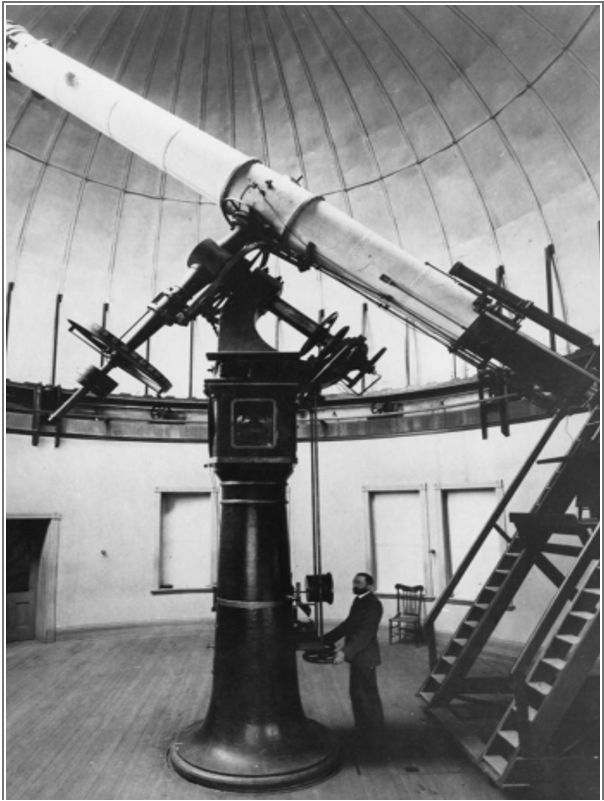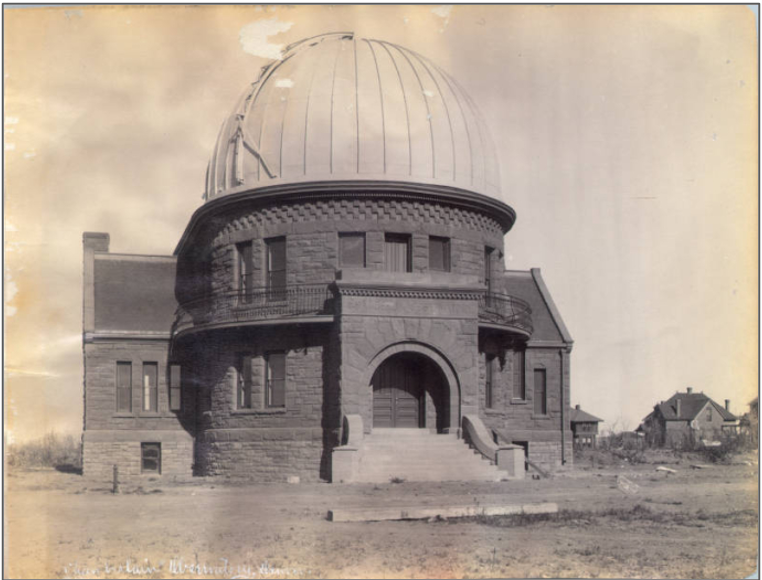Clark Secrest, writing in Colorado Heritage Magazine in 1992, pointed out that the short-lived town of South Denver had its own railway and its own university, but almost no saloons. The Town Hall was located at 1520 S. Grant St. in the former home of Mayor James Fleming who served three terms. The original boundaries of South Denver went from Colorado Boulevard to the east, Pecos Street to the west, Yale Avenue to the north, and Alameda Avenue to the south.
South Denver formally existed for only eight years, from 1886 to 1894, but played a crucial role in the growth and development of University Park, and vice versa.


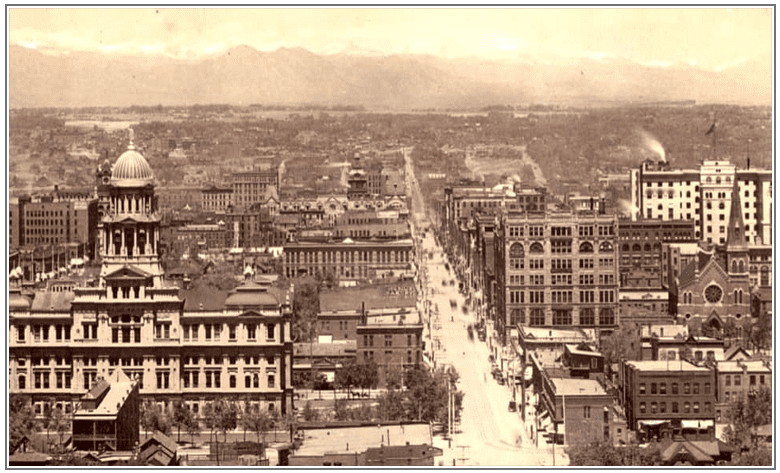
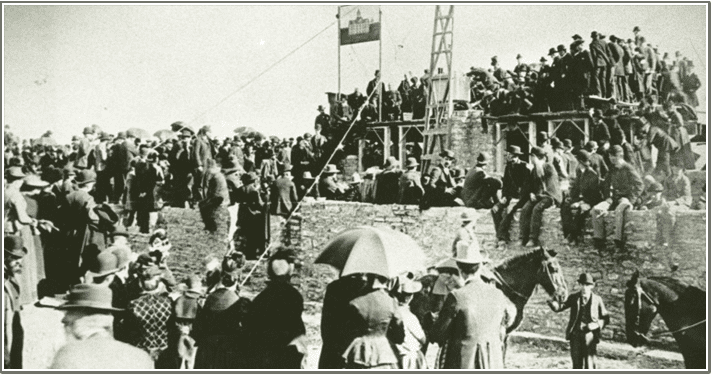
University of Denver
Colorado Seminary, as the University of Denver was originally known, was founded in 1864 by John Evans and a group of prominent Denver citizens. Evans had previously founded Northwestern University in Chicago and wanted to create a college in Denver so future generations would not have to travel back east for higher education. Colorado Seminary occupied a single building at 14th and Arapahoe streets in Denver, approximately where the parking garage for the Denver Center for the Performing Arts now stands.
In 1880 the school added the name University of Denver as the degree granting institution. It would own all property, and the University would grant degrees. By the 1880s the Seminary Building was land locked, making expansion difficult. Downtown Denver was also increasingly becoming home to a large number of saloons and brothels, just the type of institutions the good Methodist founders wanted to avoid. They wanted to create a utopian educational colony, a “university park.” Evans already had some experience in this area, having helped develop Evanston, Illinois, the suburb of Chicago where his Northwestern University was located. Deciding to vacate the downtown location for a more pastoral setting, the Board of Trustees in 1886 considered several offers of land, including parcels in Barnum’s Addition and in the Swansea area.


Rufus Clark
Rufus “Potato” Clark was one of the original settlers of the Highlands Ranch area. Clark became an active member in the political and philanthropic world of early Denver. He arrived in Denver in 1859. He sold vegetables to miners. He became quite successful in this business, and it was believed he earned $30,000 in one year from potatoes alone. Because he made his fortune selling potatoes, Clark became known as the “Potato King of Colorado.” Clark was an active member in the political and philanthropic world of early Denver. He served as a member of the Territorial Legislature and assisted the Salvation Army in acquiring a building for their headquarters. He sent most of his potato crop to Chicago after the 1871 Great Chicago Fire and built a college in Africa! However, Clark is more widely known for heading the movement which culminated with the donation of 150 acres of land located three miles southeast of Denver in what was named then Arapahoe County. This land would become the foundation for the University of Denver. The new land not only secured an escape from the moral and environmental pollution of Denver, but it afforded the University with a spectacular view of the Front Range. Within a short time, other gifts of cash or outright gifts of neighboring land swelled the University’s holdings to nearly 500 acres.
Clark had conditions to go with his offer, such as the planting of trees and the laying out of a street grid. He also demanded that no alcohol ever be made or sold in the area. Legend has it that Clark was a reformed alcoholic who had been saved at a tent revival meeting. Today one can still find some home mortgages in south Denver with old covenants against producing or selling alcohol on the premises. In areas outside of Clark’s original gift, the town of South Denver placed a $3,500 annual saloon license fee, high enough to keep out most of these types of establishments. Clark passed away in 1911.
Offers of Land and Early Settlers
Methodist Bishop, Henry White Warren, and his wife, Elizabeth, demonstrated their support by purchasing land east of the University. In 1887 they began construction on a home that came to be known as Gray Gables. Clark’s land offered a stunning view of fifty miles of Front Range Mountains away from the smoke and pollution of Denver. Charles Haines, an early resident, recalled in an interview when he was 102 years old that coyotes outnumbered people for several years. Over the next few years, the University sold lots in the area to raise revenue.

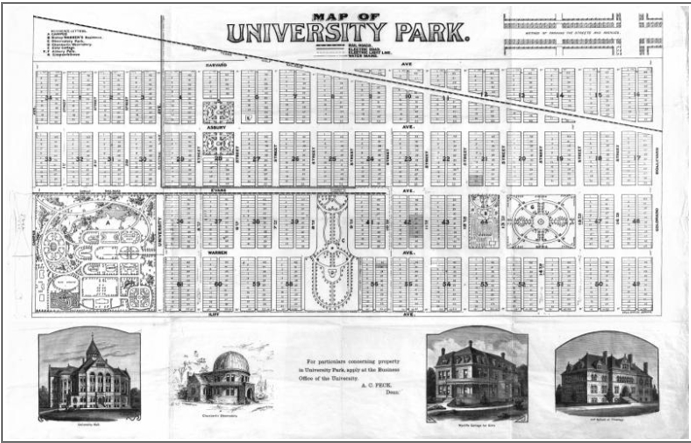
South Denver is Annexed
Though South Denver had several hundred residents by the mid 1890s, only a dozen or so residents were living in University Park. Despite these small numbers University Park already had telephone service, a post office, graded roads, and water from a well at Milwaukee and Warren Streets. It would be more than ten years before electricity was installed throughout the Community. South Denver was still largely farmland, primarily growing alfalfa, corn, beets, apples, and cherries. The town of South Denver ceased to exist when voters approved annexation by the City of Denver. This annexation was primarily for financial reasons. Though the residents of South Denver wanted to maintain their independence from the big city, the Panic of 1893 had made a negative impact on real estate values. Taxes would be cheaper, and more city services provided by annexation. South Denver was not alone. Within ten years Denver had annexed Park Hill, Highlands, Barnum, Colfax, Globeville, Montclair, and Valverde.
This center of cultural activity is the home of the University of Denver. The area features some of south Denver's finest architecture. Surrounding the university are mostly one-story single-family homes with spacious lawns. The area continues to be a largely Anglo community with the shopping convenience of quaint commercial districts interspersed with long tree-lined residential streets.
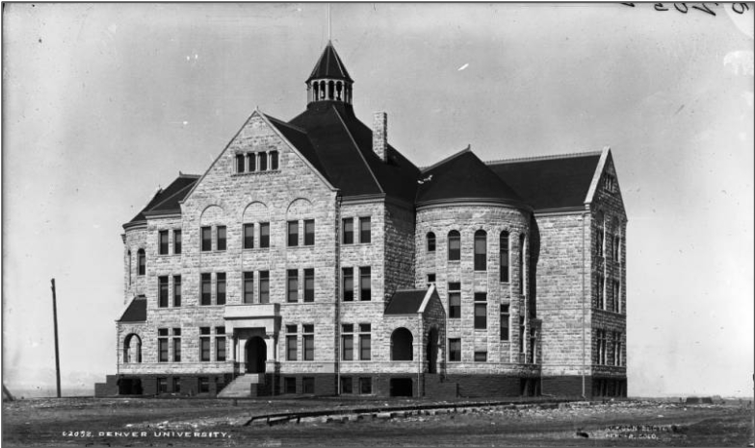
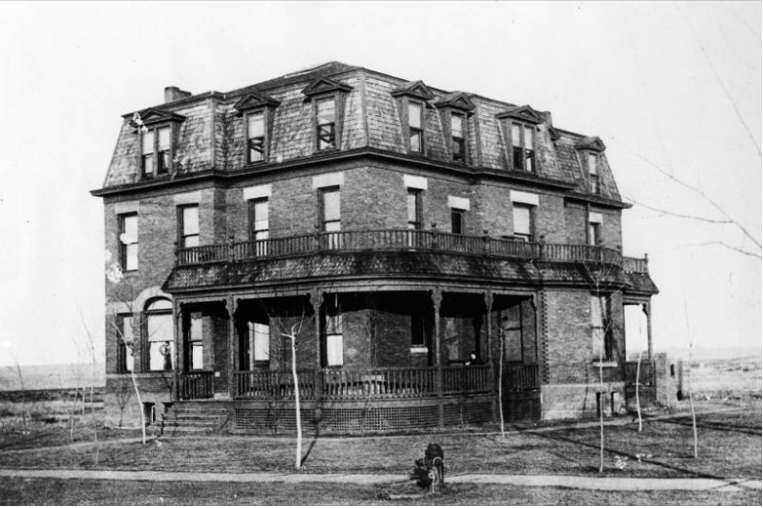
Breaking Ground
In 1887 the Denver Circle Railroad extended a line into University Park. The next year ground was broken in University Park for an observatory. Real estate promoter and amateur stargazer H.B. Chamberlain had given the funds to build the observatory. One advantage of building an observatory in University Park was the lack of urban lighting, which interferes with stargazing.
Evans erected an office building at the corner of what is now Evans and S. Milwaukee which housed the first Methodist Church in the area. The building still stands and is today a real estate office.
In 1890 ground was broken for University Hall, and in the fall of 1892 the school officially relocated to University Park. Church services would now be held in University Hall, which also housed all of the classrooms, administrative offices, the library, and the gymnasium.
Herbert Alonzo Howe
Herbert Alonzo Howe was an internationally known astronomer and mathematician as well as a Professor of Astronomy and Applied Mathematics at the University of Denver from 1880 to 1925. Howe was influential in the early days of the University of Denver by holding many leadership positions within the institution. Of his many roles, these included Dean of the College of Arts and Sciences from 1892 to 1926, Director of the Chamberlin Observatory from 1892 to 1926, and Acting Chancellor at the University before 1900. Howe was also instrumental in building the Chamberlin Observatory and the installation of its telescope. In 1883 he began raising funds for a roof-topped observatory and in 1888 construction began. With the help of benefactors such as Humphrey Chamberlin, after whom the structure would later be named, completion occurred in 1891 making it the first official University structure. Three years later Howe personally carried a 20-inch telescope lens with him on the train from Massachusetts, making it one of the largest in the world.
Since Howe’s death in 1926, the Chamberlin Observatory has had several distinguished scholars who have overseen and advanced the educational functions and reputation of the institution.
